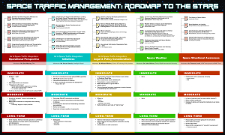Start Date
5-11-2014 10:30 AM
Abstract
Commercial aerospace operations are a reality. Companies are already carrying out flight trials and will be carrying the first passengers and freight in the near future. The commercial development of more vehicles is underway. This situation can be equated to a similar stage in the development of Remotely Piloted Air Systems (RPAS) where technological advances took place at a far faster pace than envisaged leading to a fragmented regulatory and operational situation which is still not resolved at the present time.
In the initial phases of development of space operations, activities were carried out as a function of the State concerned. These limited operations were generally contained within segregated airspace and did not have a large impact upon traditional aviation activities. However technological advances during the past decade have encouraged many commercial companies to enter the market and therefore the face of the industry is changing to become commercially oriented, moving away from State responsibility.
As a commercially led industry it will require to have greater accessibility to its market base (population, freight bases etc) and therefore will, increasingly, need to be integrated into the existing Air Traffic Management system to enable the use of infrastructure presently utilised for aviation. This will include airports and airspace which may already be congested.
In order to deal with this on a global basis there is a need for a harmonised approach to the development and integration of commercial space vehicles into the existing ATM system. Individual States are already developing procedures for this integration on a National basis. If the issue is not acted upon quickly on an international basis the longer we wait the higher will be the level of fragmentation which, in turn, will be more difficult to unravel.
This paper provides a timely catalyst to raise implications of the operation of commercial aerospace vehicles within the existing Air Traffic Management (ATM) system and to consider if the ATM system can safely include the integration of commercial aerospace vehicles into the existing system without a significant change in both the operational practices and technological standards of air traffic control. It also examines the feasibility of extending todays ATM system to encompass Space Traffic Management. More importantly that existing target levels of safety are not compromised and are maintained or improved in line with future system requirements
It will identify potential areas in which the existing system will require to be changed and/or upgraded to accommodate aerospace technology.
Area of Interest
NAS Integration
Integration of Aerospace Operations into the Global Air Traffic Management System
Commercial aerospace operations are a reality. Companies are already carrying out flight trials and will be carrying the first passengers and freight in the near future. The commercial development of more vehicles is underway. This situation can be equated to a similar stage in the development of Remotely Piloted Air Systems (RPAS) where technological advances took place at a far faster pace than envisaged leading to a fragmented regulatory and operational situation which is still not resolved at the present time.
In the initial phases of development of space operations, activities were carried out as a function of the State concerned. These limited operations were generally contained within segregated airspace and did not have a large impact upon traditional aviation activities. However technological advances during the past decade have encouraged many commercial companies to enter the market and therefore the face of the industry is changing to become commercially oriented, moving away from State responsibility.
As a commercially led industry it will require to have greater accessibility to its market base (population, freight bases etc) and therefore will, increasingly, need to be integrated into the existing Air Traffic Management system to enable the use of infrastructure presently utilised for aviation. This will include airports and airspace which may already be congested.
In order to deal with this on a global basis there is a need for a harmonised approach to the development and integration of commercial space vehicles into the existing ATM system. Individual States are already developing procedures for this integration on a National basis. If the issue is not acted upon quickly on an international basis the longer we wait the higher will be the level of fragmentation which, in turn, will be more difficult to unravel.
This paper provides a timely catalyst to raise implications of the operation of commercial aerospace vehicles within the existing Air Traffic Management (ATM) system and to consider if the ATM system can safely include the integration of commercial aerospace vehicles into the existing system without a significant change in both the operational practices and technological standards of air traffic control. It also examines the feasibility of extending todays ATM system to encompass Space Traffic Management. More importantly that existing target levels of safety are not compromised and are maintained or improved in line with future system requirements
It will identify potential areas in which the existing system will require to be changed and/or upgraded to accommodate aerospace technology.


Comments
There will not be a live presentation of this of this title during the STM Conference.